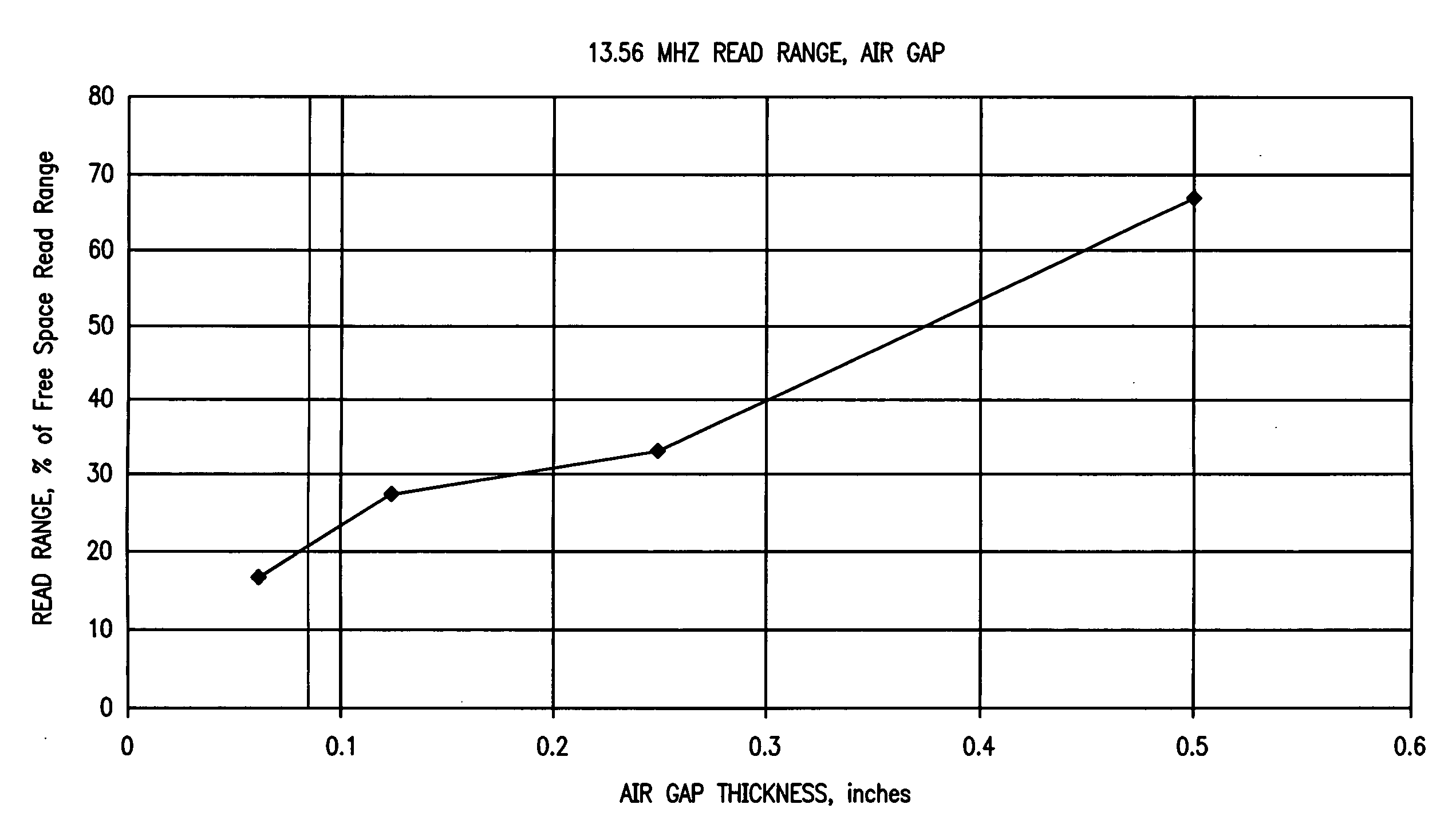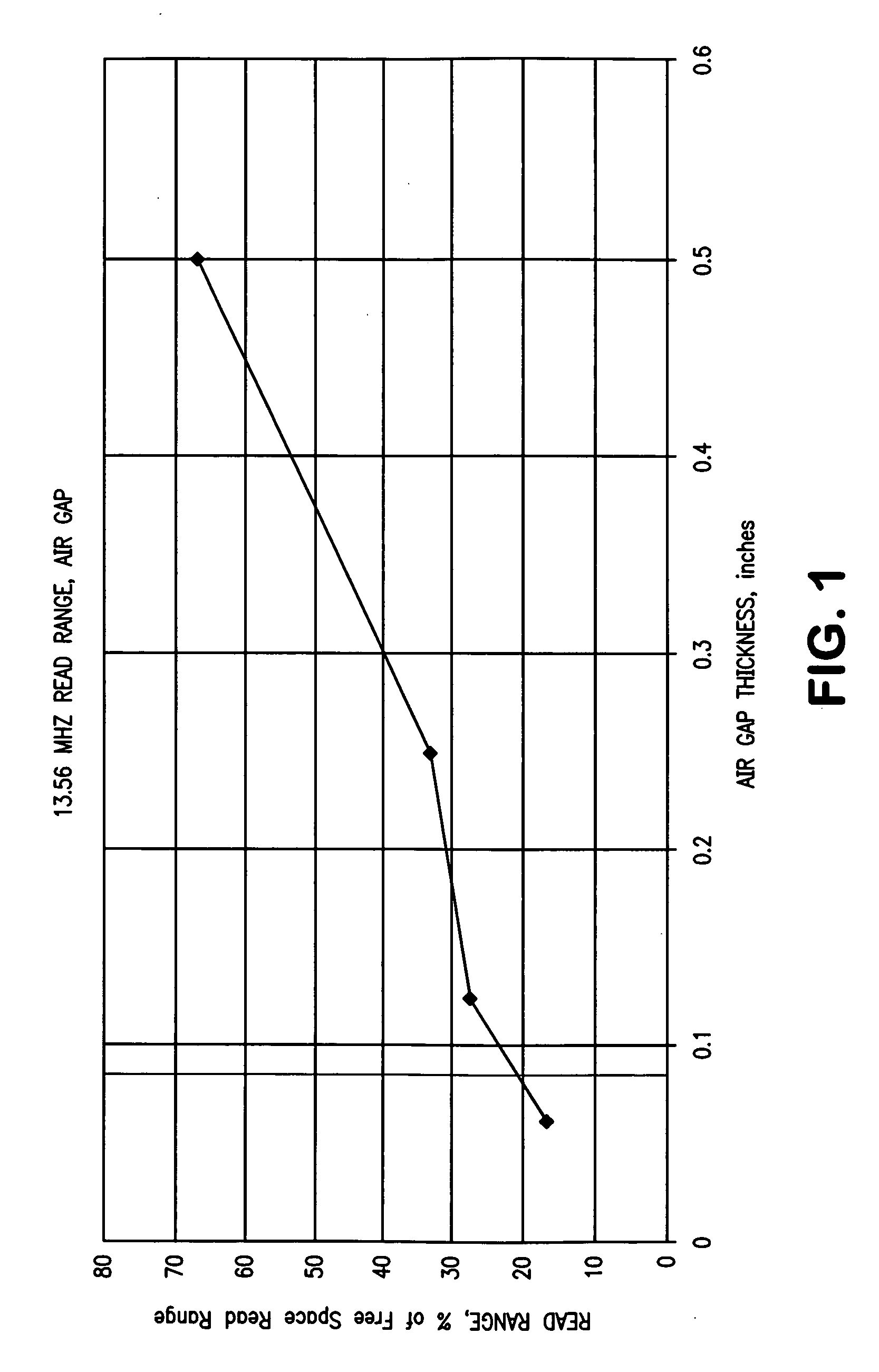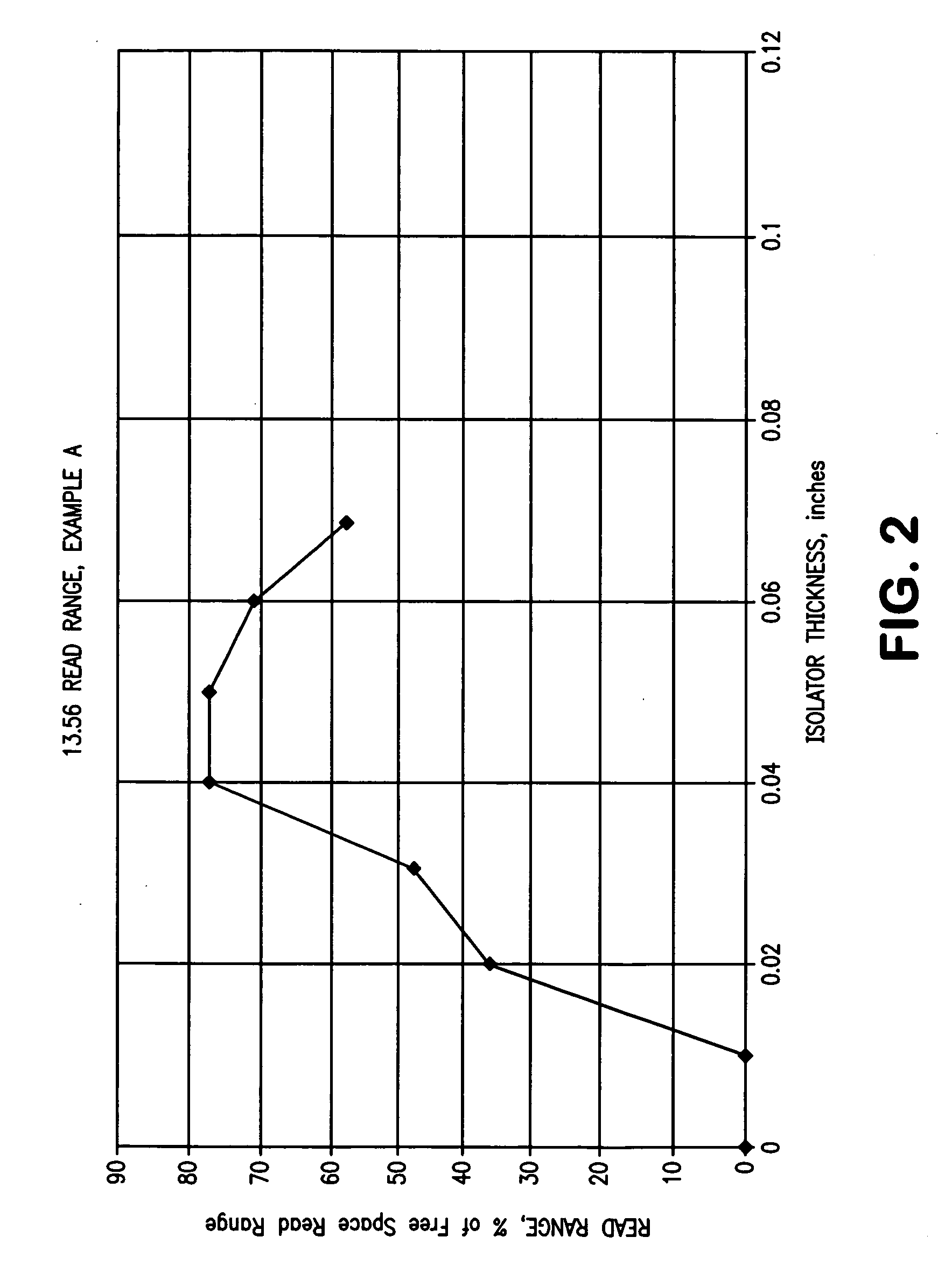RFID tags having improved read range
a technology of read range and RFID tags, applied in the direction of burglar alarm mechanical actuation, instruments, transportation and packaging, etc., can solve the problem of adversely affecting the read distance, and achieve the effect of effectively isolating the substrate and optimizing the performan
- Summary
- Abstract
- Description
- Claims
- Application Information
AI Technical Summary
Benefits of technology
Problems solved by technology
Method used
Image
Examples
Embodiment Construction
[0024] As described above, an air gap between an RFID tag and a metal surface is traditionally used to improve the read distance of the tag. Larger air gaps (i.e. taller standoffs) are superior to narrower gaps. Because of the degradation of the read distance at close proximity to the metal substrate, standoffs are typically more than 0.25 inches thick. Based on FIG. 1, this represents a read distance of approximately 33% of the free space read distance. Increasing the standoff to 0.5 inches doubles the read distance of the RFID tag. However, a standoff of this height is susceptible to being damaged or being separated from the article. Thus, the designer is faced with a tradeoff between maximizing read distance by increasing the height of the standoff, and minimizing the susceptibility of the RFID tag to damage by reducing the height of the standoff.
[0025] Alternatively, the RFID Handbook suggests the use of highly permeable ferrite between the antenna coil and the metal substrate ...
PUM
| Property | Measurement | Unit |
|---|---|---|
| thickness | aaaaa | aaaaa |
| radio frequency | aaaaa | aaaaa |
| frequency range | aaaaa | aaaaa |
Abstract
Description
Claims
Application Information
 Login to View More
Login to View More - R&D
- Intellectual Property
- Life Sciences
- Materials
- Tech Scout
- Unparalleled Data Quality
- Higher Quality Content
- 60% Fewer Hallucinations
Browse by: Latest US Patents, China's latest patents, Technical Efficacy Thesaurus, Application Domain, Technology Topic, Popular Technical Reports.
© 2025 PatSnap. All rights reserved.Legal|Privacy policy|Modern Slavery Act Transparency Statement|Sitemap|About US| Contact US: help@patsnap.com



